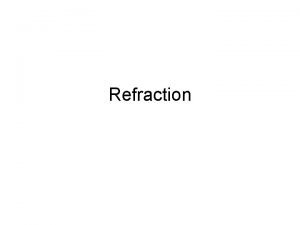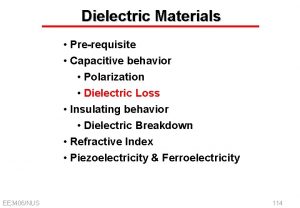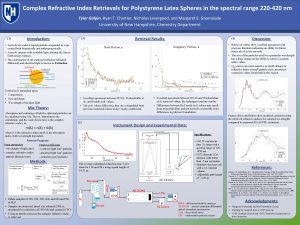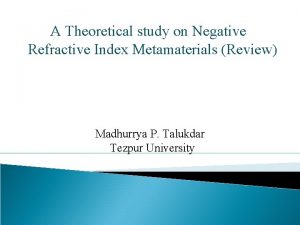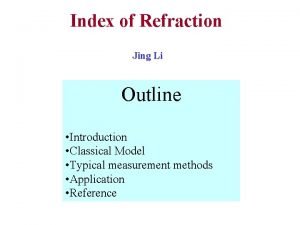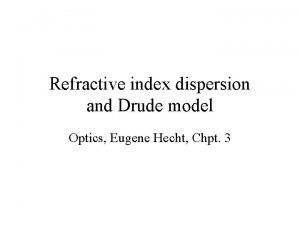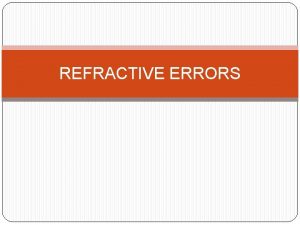The Refractive Index You have already studied that










- Slides: 10


The Refractive Index

You have already studied that a ray of light that travels obliquely from one transparent medium into another will change its direction in the second medium. The extent of the change in direction that takes place in a given pair of media is expressed in terms of the refractive index, the “constant” appearing on the right-hand side of Eq Sine i/sine r=constant

The refractive index can be linked to an important physical quantity, the relative speed of propagation of light in different media. It turns out that light propagates with different speeds in different media. Light travels the fastest in vacuum with the highest speed of 3× 108 m s– 1. In air, the speed of light is only marginally less, compared to that in vacuum. It reduces considerably in glass or water.

The value of the refractive index for a given pair of media depends upon the speed of light in the two media, as given below. Consider a ray of light travelling from medium 1 into medium 2 Let v 1 be the speed of light in medium 1 and v 2 be the speed of light in medium 2. The refractive index of medium 2 with respect to medium 1 is given by


If medium 1 is vacuum or air, then the refractive index of medium 2 is considered with respect to vacuum. This is called the absolute refractive index of the medium. It is simply represented as n 2. If c is the speed of light in air and v is the speed of light in the medium, then, the refractive index of the medium nm is given by The absolute refractive index of a medium is simply called its refractive index.

Absolute refractive index of some material media An optically denser medium may not possess greater mass density. For example, kerosene having higher refractive index, is optically denser than water although its mass density is less than water.

Optical density � The ability of a medium to refract light is also expressed in terms of its � � optical density. Optical density has a definite connotation. It is not the same as mass density. We have been using the terms ‘rarer medium’ and ‘denser medium’ in this topic. It actually means ‘optically rarer medium’ and ‘optically denser medium’, respectively. When can we say that a medium is optically denser than the other? In comparing two media, the one with the larger refractive index is optically denser medium than the other. The other medium of lower refractive index is optically rarer. � The speed of light is higher in a rarer medium than a denser medium. Thus, a ray of light travelling from a rarer medium to a denser medium slows down and bends towards the normal. � When it travels from a denser medium to a rarer medium, it speeds up and bends away from the normal.

FOR MORE QUERIES: �YOU CAN LOG IN TO WEBSITE www. scienceeasylearning. wordpr ess. com �YOU CAN ALSO LIKE MY FB PAGE THAT IS: KKCHAUHAN
 If you had not studied hard
If you had not studied hard Already can or can already
Already can or can already How to calculate refractive index with speed of light
How to calculate refractive index with speed of light Permittivity refractive index relation
Permittivity refractive index relation Refractive index polystyrene
Refractive index polystyrene What is sturm's conoid
What is sturm's conoid Donor acceptor ratio in physical pharmacy
Donor acceptor ratio in physical pharmacy Negative refractive index
Negative refractive index Relation between refractive index and permittivity
Relation between refractive index and permittivity What causes glass to fracture into shards when broken?
What causes glass to fracture into shards when broken? Drude model refractive index
Drude model refractive index


